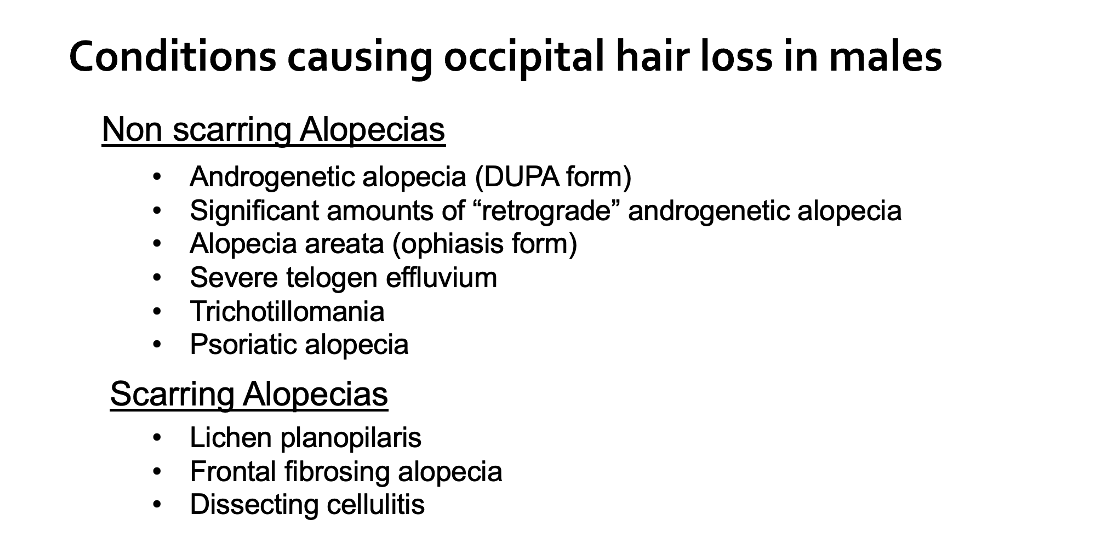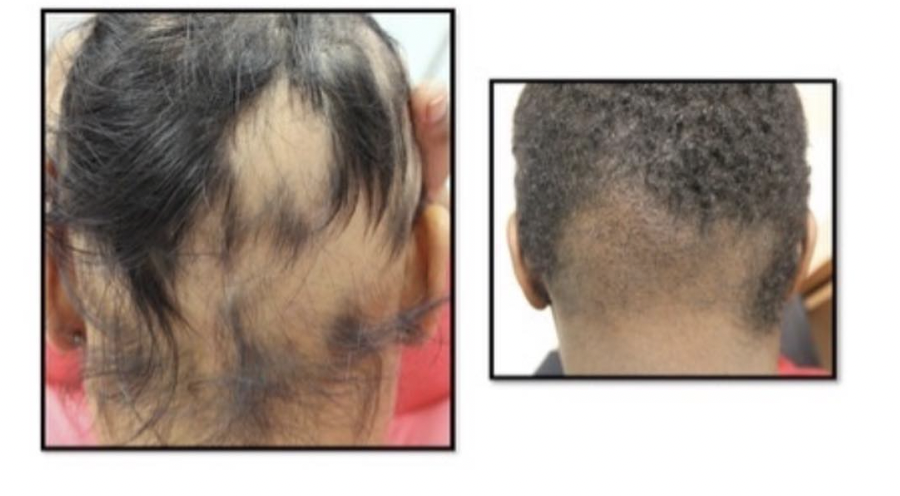I have hair loss in the donor area. How is that even possible???
Hair Loss in the Donor Area
I’ve selected this question below for this week’s question of the week. It allows us to review some concepts related to hair loss in the occipital scalp.
Question
Hi Dr Donovan,
I have heard har loss does not affect the donor area. Is that correct? My donor area seems much much thinner! How can that be? I am so confused.
Answer
First, hair loss is possible in the donor area. Absolutely!
Anywhere there is hair - there are usually several human hair loss conditions that have the potential to take away those hairs.
Lichen planopilaris, frontal fibrosing alopecia, alopecia areata, diffuse unpatterned alopecia (DUPA), dissecting cellulitis, psoriasis, seborrheic dermatitis, trichotillomania all commonly affect the back of the scalp - or what you are terming the “donor area”.
Even in males who do not have DUPA, there can be some “retrograde” thinning - starting from the neck upwards. there can also be some slight thinning that happens over time as well. Many males in their 40s, 50, 60s and 70s do not retain the same density they had at age 18. This is not talked about all that much - but there is some slight thinning that goes on in the donor area too. Fortunately, it’s relatively minor for most males.
Alopecia areata is an autoimmune condition which can cause hair loss at the back of the scalp. The form of alopecia areata that causes hair loss at the back of the scalp is called the ophiasis form of alopecia areata.
Dissecting cellulitis affecting the back of the scalp; the occipital area is a common site for this condition.
Hair loss sure can affect the donor area!
The way you really should be stating this is “Males with a diagnosis of androgenetic alopecia rarely experience hair loss in the occipital scalp (donor area). However, some males with androgenetic alopecia can have hair loss in the donor area if they have a diagnosis of “diffuse unpatterned alopecia (DUPA)”, a diagnosis of significant “retrograde” alopecia and males with other diagnoses besides androgenetic alopecia can often experience hair loss in the donor area.” Even some slight reduction in donor density is expected in males with advanced androgenetic alopecia as well.
So there are lots of reasons for donor area density to be less than it once was!
Be sure to review with your practitioners what your reason might be.
I hope this helps.
Thanks again for the interesting question.



